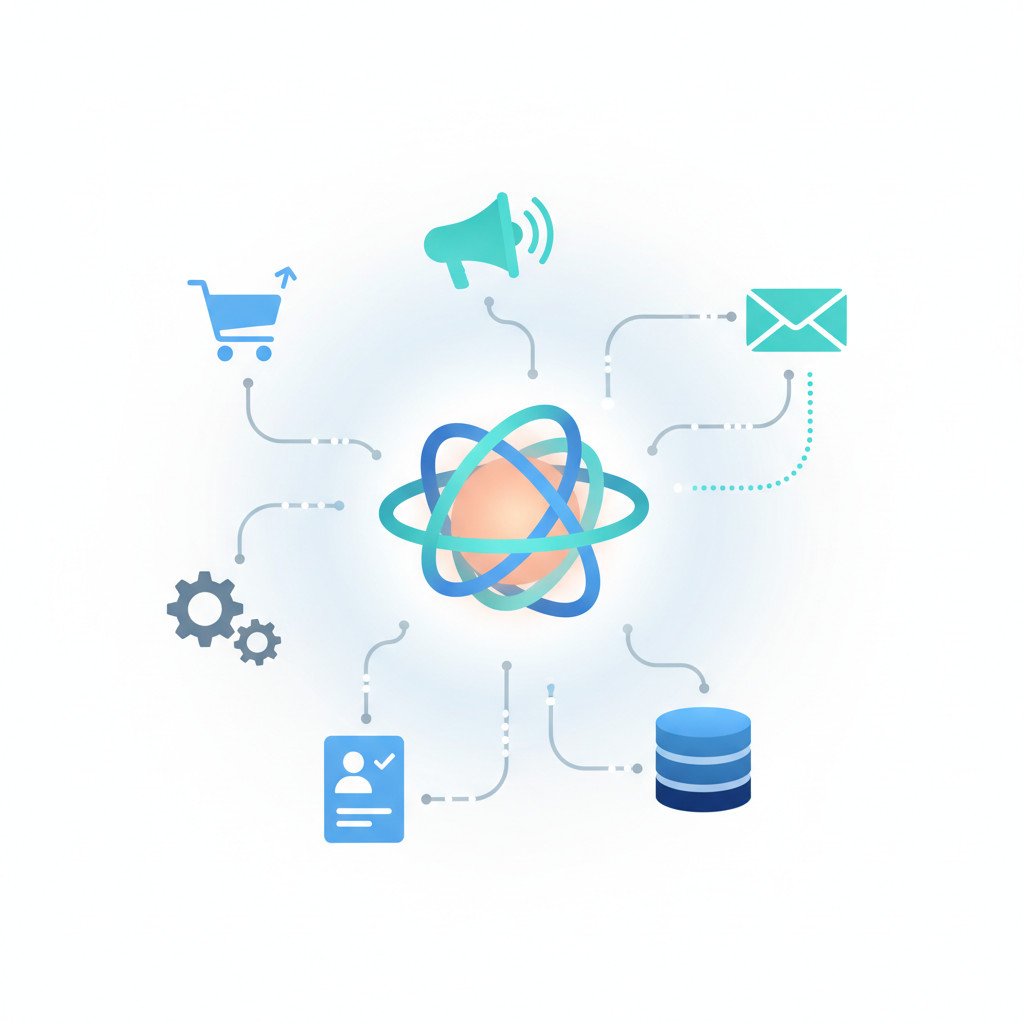Agentic AI in the Enterprise: Preparing Systems, People, and Governance for Autonomous Impact
Agentic AI in the Enterprise is the next frontier of automation. It promises autonomous agents that act on behalf of teams and systems. Because these agents can take actions, enterprises gain new speed and scale in processes. However, this power raises governance, data quality, and integration challenges. Therefore, leaders must rethink orchestration, change management, and API strategy before deployments.
Adopting agentic orchestration can unlock faster decision velocity and richer personalization for customers. Yet, many implementations fail when teams ignore data pipelines and integration foundations. Therefore success depends on both AI models and the non-AI work that supports them. Moreover, governance frameworks make autonomous choices auditable and safe, which builds stakeholder trust. By the end of this article, you will have a practical roadmap. It will cover how to prepare people, platforms, and policy for agentic AI deployments.
Agentic AI in the Enterprise: What it Is and How it Works
Agentic AI describes autonomous software agents that sense data, decide, and take actions. These agents combine language models, rules, and connectors. They also use orchestration layers to sequence tasks across systems. Because agents act rather than only advise, they unlock new automation at scale. However, practical success depends on data quality, APIs, and governance.
At a systems level, an agent uses three core components. First, perception gathers data from APIs, streams, and documents. Second, reasoning uses models and business logic to select actions. Third, execution actuates changes through integrations or human workflows. Moreover, agentic orchestration coordinates multiple agents to complete end-to-end processes. For enterprise readiness, teams must treat orchestration as the connective tissue that binds agents, RPA, and backend services. See practical guidance on governance and orchestration in this agentic AI readiness primer What is Agentic AI readiness.
Many organizations overlook non-AI foundations. Therefore, prepare data pipelines, API strategy, and change management before large rollouts. For more on foundational work, review this discussion of the non-AI tasks that matter The non-AI work that will set enterprises up for agentic AI success. Also, agent deployment at the desk changes daily work. For workplace implications, read about Gemini Enterprise and desktop agents How Can Gemini Enterprise Put AI Agents on Every Desk.
Typical enterprise use cases include:
- Automation: end-to-end order-to-cash automation using RPA and IDP
- Decision-making: dynamic pricing, credit decisions, and fraud triage
- Process optimization: supply chain orchestration and exception handling
- Personalization: real-time customer journeys and targeted offers
- Developer productivity: automated testing, code review, and issue resolution
Yet adoption risks remain. For example, MIT research notes many generative AI initiatives fail to show business impact, because teams skip integration and metrics. For details, see the MIT report summary.

Benefits and challenges of Agentic AI in the Enterprise
Agentic AI delivers step change improvements in automation and decision making. Because agents act autonomously, enterprises gain speed and scale across processes. As a result, teams can shift from manual orchestration to strategic oversight. However, these gains only materialize when data, integrations, and governance are mature.
Key benefits
- Improved efficiency: agents automate routine end-to-end tasks such as order-to-cash, lowering cycle times and cost.
- Scalability: agent fleets scale horizontally, handling spikes in customer demand without hiring.
- Faster decisions: real-time data feeds enable dynamic pricing and fraud detection.
- Personalization: agents tailor offers in milliseconds using event-driven data.
- Developer velocity: automated testing and code triage speed releases.
Common challenges
- Integration complexity: many enterprises juggle multiple integration tools and APIs, which breaks agent workflows.
- Data quality and sprawl: agents are only as good as the data they run on, so pipelines must be reliable.
- Security and trust: autonomous actions raise attack surface and compliance questions. Follow standards and guidance from the National Institute of Standards and Technology (NIST) to reduce risk: NIST.
- Governance and auditability: leaders need policies, explainability, and human-in-the-loop controls.
- Organizational change: teams require new skills and clear ownership for orchestration and monitoring.
For context, research by MIT Technology Review Insights highlights that many generative AI pilots fail to deliver measurable business impact when teams omit integration and measurement: MIT Technology Review Insights. Therefore, balance ambition with disciplined investment in non-AI foundations.
| Solution | Automation capabilities | Integration options | Scalability | Pricing model | Best for |
|---|---|---|---|---|---|
| UiPath Agentic Automation and Orchestration | Low-code agent creation; RPA integration; IDP support | Pre-built connectors; SAP Integration Suite compatibility; Event Mesh support | Enterprise-grade horizontal scaling; orchestration across robots | Enterprise licensing; subscription per bot and orchestration tier | Process-heavy organizations and RPA-first environments |
| AgentPath | Focused agent workflows; agent testing and Autopilot features | API-first design; SDKs for common ERPs and services | Cloud-native; designed for agent fleets | SaaS subscription with usage tiers | Rapid prototype to production agent deployments |
| SAP Integration Suite with Agentic Orchestration | Strong back-office automation; data consistency and reconciliation | Native SAP connectors; broad third-party adapter ecosystem | High throughput; proven in large retail and finance environments | Subscription and enterprise contracts | Large SAP-centric enterprises requiring reliable integrations |
| Google Gemini Enterprise | Desktop agents for knowledge work; natural language task automation | Google Workspace and cloud APIs; enterprise connectors | Scales with Google Cloud; suited for desk-level deployments | Enterprise licensing and seat-based plans | Knowledge worker augmentation and personalization at scale |
| Open-source frameworks plus orchestration | Flexible agent logic; fully customizable workflows | Requires engineering for connectors; integrates via APIs and adapters | Depends on deployment architecture and ops investment | Open-source core plus infrastructure costs | Teams seeking full control and customization |
Conclusion: Turning Agentic AI into Business Impact
Agentic AI in the enterprise can transform how companies operate. It automates routine work, scales decision making, and creates personalized customer experiences. However, success requires more than models. You also need clean data, reliable integrations, and clear governance. Therefore, leaders should balance ambition with practical readiness work.
EMP0 helps organizations bridge that gap. We combine strategy, technical integration, and change management to deploy agentic orchestration safely and at scale. As a result, teams accelerate time to value and reduce operational risk. Visit our website at EMP0 to learn about our services and case studies. Also explore our blog at our blog for detailed guides and frameworks. For automation workflows and creator tooling, see our n8n profile at n8n profile.
Start small, measure outcomes, and iterate quickly. If you need a partner to design governance, data pipelines, or orchestration, EMP0 can help. Reach out and begin your agentic AI journey today.
Frequently asked questions about Agentic AI in the Enterprise
What is Agentic AI in the Enterprise?
Agentic AI refers to autonomous software agents that sense, decide, and act across systems. These agents execute tasks, coordinate with services, and escalate when needed. As a result, teams see faster outcomes and lower manual effort.
How do enterprises typically apply agentic agents?
Common uses include process automation, dynamic decisioning, personalization, and developer productivity. For example, an agent can route invoices, adjust pricing, or run regression tests automatically.
What are the main risks and concerns?
Security, data quality, and brittle integrations top the list. Therefore, implement strict access controls, monitoring, and rollback paths. Also build audit trails and human-in-the-loop checkpoints.
How should organizations measure success?
Track cycle time, error rates, cost per transaction, and business outcomes. Moreover, use A/B tests and KPIs tied to revenue or customer satisfaction.
Where should teams start?
Start with a focused pilot on a high-impact process. Then invest in data pipelines, APIs, and governance. Finally, iterate and scale based on measured results.

